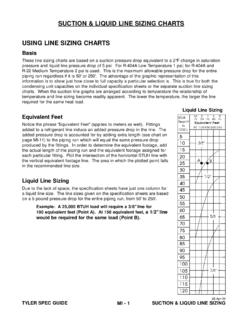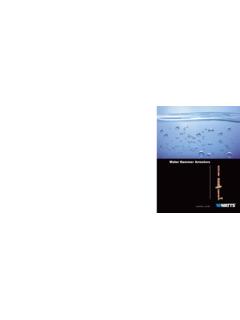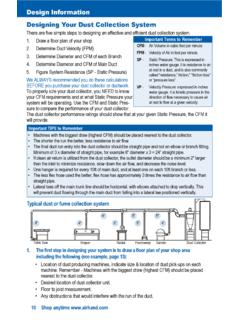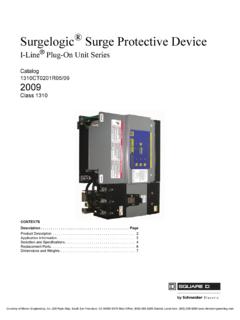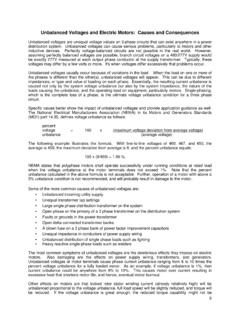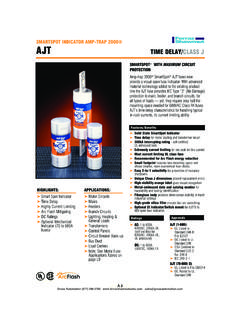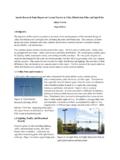Transcription of Flower Parts - Virginia Department of Education
1 Science Enhanced Scope and Sequence Grade 4 Virginia Department of Education 2012 1 Flower Parts Strand Life Processes Topic Investigating plant anatomy and life processes Primary SOL The student will investigate and understand basic plant anatomy and life processes. Key concepts include a) the structures of typical plants and the function of each structure; b) processes and structures involved with plant reproduction. Related SOL The student will demonstrate an understanding of scientific reasoning, logic, and the nature of science by planning and conducting investigations in which a) distinctions are made among observations, conclusions, inferences, and predictions; b) objects or events are classified and arranged according to characteristics or properties; m) current applications are used to reinforce science concepts.
2 Background Information A typical plant has six basic Parts : seeds, roots, stems, leaves, flowers , and fruits. Seeds contain everything a plant needs to grow. Seeds have three basic Parts : the embryo, the endosperm and the seed coat. Roots provide plants with three main functions. They support the plant so it can't be blown or knocked over easily, they absorb nutrients and water out of the soil, and some roots also store sugar and starch, which provide food for the plant. As a seed begins to grow, the first part to appear is the root. Stems contain tube like structures that transport water and nutrients from the roots to the leaves. Stems can be either above ground or below ground.
3 If they are above ground, they hold the plant up, so the leaves get more sunlight. If they are below ground, they usually provide food storage for the plant. Leaves make food for the plant by absorbing sunlight through the process of photosynthesis. Leaves also contain pores that let water and air enter and exit the plant. There are many different shapes and sizes of leaves and; a few plants, such as cacti, do not have leaves as a way to conserve water. flowers contain the reproductive Parts of the plant where new seeds are formed. flowers look and smell a certain way to attract insects and bees that will pollinate them. flowers have male and female Parts . One of the male Parts , called the stamen, has pollen on it.
4 When this pollen touches the female part , called the stigma, pollination begins. Some plant species have one Flower with just male Parts and another with just female Parts , while others have both male and female Parts within the same Flower . The pollen is usually carried from the stamen to the stigma by an insect, bee, animal, or the wind. Animals assist in the pollination of more than 90 percent of the flowers on Earth. Wind and rain assist the rest. In Science Enhanced Scope and Sequence Grade 4 Virginia Department of Education 2012 2 order to attract pollinators, plants have adapted in many ways: they produce sweet nectar, colorful petals, and attractive aromas.
5 Once fertilization occurs, the ovary bulges and becomes plump or hard to guard the seeds. The fruit is the portion of the plant that protects the seeds and helps in the transportation and distribution of seeds. Some fruits are a source of food for birds and other animals, which eat the fruits and excrete the seeds elsewhere. Some seeds attach to an animal coat when an animal brushes the plant and are transported to new locations. Some seeds are blown by the wind to other locations. Seeds can be found inside the fruit, such as in apples or oranges, or located on the outside, such as strawberries. Not all plants produce fruit. Ferns, for example, produce spores instead of seeds.
6 Materials A flowering plant that has roots still attached, has a visible Flower , and has fruit with seeds that can be discussed Several hand lenses for class observations Student journals Digital cameras (if available) or drawing paper and colored pencils Attached Parts of a Plant one per student Per group: 1 Flower Hand lens Tweezers Clear tape Attached Flower Dissection worksheet Crayons or colored pencils White drawing paper Variety of fruit with seeds ( , cucumbers, tomatoes, squash, green peppers, Valencia oranges) Paper plates Knife (for teacher to cut fruit) Vocabulary Seed, root, stem, leaf, Flower , fruit, sepal, stamen, pistil, ovary, pollen Student/Teacher Actions (what students and teachers should be doing to facilitate learning) Introduction 1.
7 Give each student a copy of the student sheet titled Parts of a Plant. 2. Share the plant that has roots, stem, leaves, and Flower . Discuss the fruit and the seed for the plant and why they are not currently on the plant. 3. Discuss the function of each plant part . 4. Have each student complete the student sheet Parts of a Plant. Science Enhanced Scope and Sequence Grade 4 Virginia Department of Education 2012 3 Procedure Activity 1 Making a Class Plant Book 1. Tell the students that they are going to help create a class Plants reference book. 2. Divide the class into groups of two or three students. 3. Give each group a digital camera or blank paper and colored pencils.
8 4. Tell the groups that it will be their job to find examples of at least five different plants. They will either take a picture of each of the plants or they will draw a picture of each. Remind them: a. Do not touch any of the plants, but just bring back a picture of each. b. In order for the class to have a good plant reference book, they need to try to find as many different kinds of plants as possible. c. Make sure they can describe each of the six Parts of each plant. If they are not sure where to find each of the Parts on a particular plant, let them know they will have an opportunity when they return to the classroom to conduct research about the plants they select.
9 5. Take the class outside to observe plants on the school grounds. 6. When each group has documented their five plants with a picture, return to the classroom. 7. Give teams an opportunity to conduct any research they need for each of their plants. If teams used digital cameras, print the pictures and mount them on white paper. Have them label each of their plant pictures with the different plant Parts . 8. Give each team the opportunity to share the pictures and information about their plants. 9. Put all the picture pages together to create a class Plants book. Procedure Activity 2 Dissecting a Plant to Study Plant Reproduction 1. Divide the class into groups of two or three students.
10 2. Give each group a paper plate holding a number of slices of various fruits, making sure that seeds are present in the slices. 3. Ask students what the foods have in common. Some groups will realize that all of the foods have seeds buried inside the fruit. 4. Explain that the fruit is formed from a specialized structure in the plant, which the students will be exploring in their investigation. Fruits contain seeds and a fleshy pulp. Some foods that we call vegetables are actually the fruit of a plant for example, cucumbers, tomatoes, and peppers. 5. Give each group a fresh Flower , tweezers, hand lens, clear tape, and the attached Flower Dissection data sheet.










